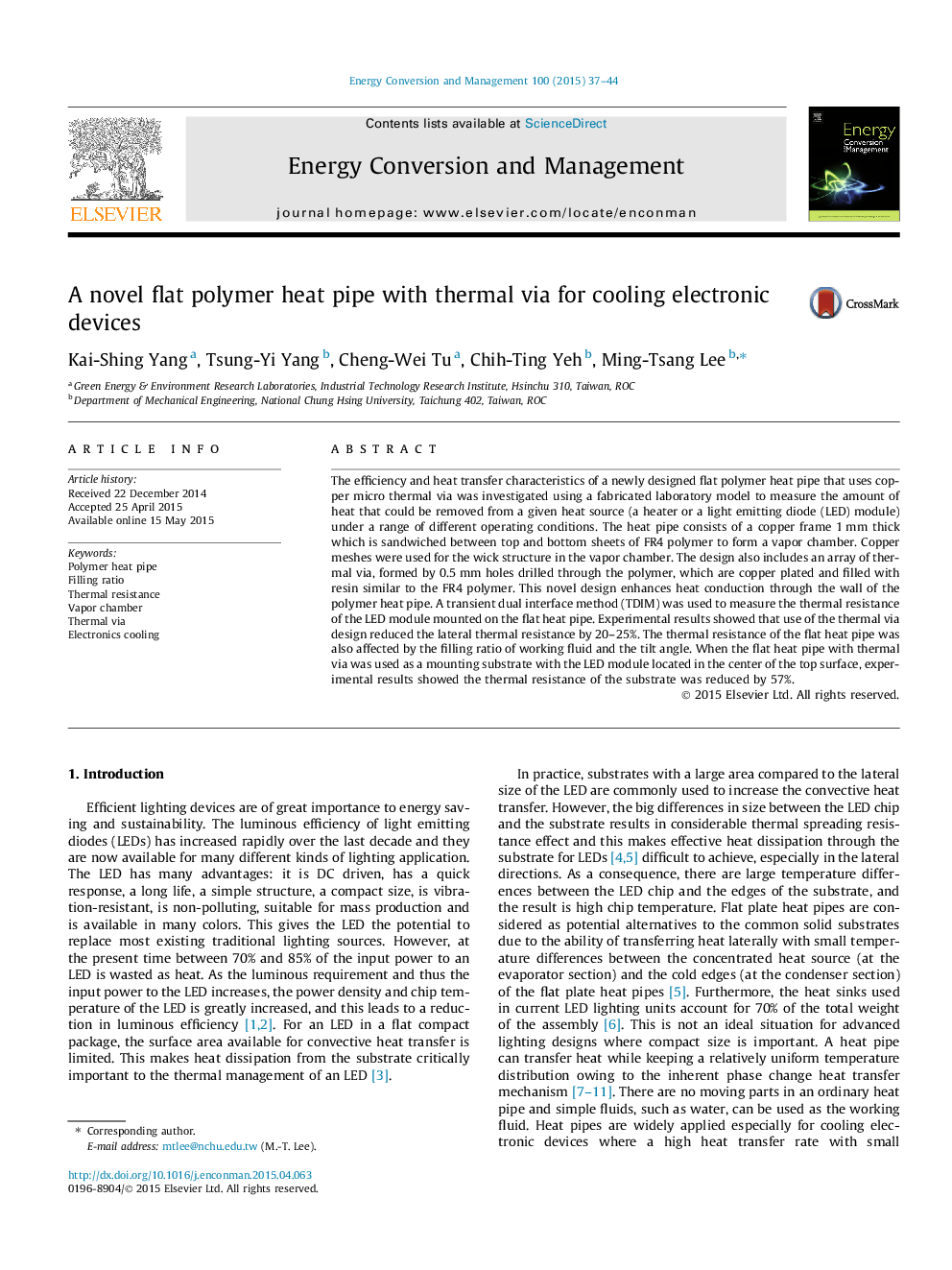| Article ID | Journal | Published Year | Pages | File Type |
|---|---|---|---|---|
| 763725 | Energy Conversion and Management | 2015 | 8 Pages |
•We design and fabricate a novel flat polymer heat pipe with thermal via arrays.•We examine the heat transfer performance of the fabricated flat plate heat pipes.•The thermal-via is effective in reducing the thermal resistance of the heat pipe.•There exists an optimal filling ratio which yields the lowest thermal resistance.•Using the flat heat pipe with thermal via for cooling electronics is investigated.
The efficiency and heat transfer characteristics of a newly designed flat polymer heat pipe that uses copper micro thermal via was investigated using a fabricated laboratory model to measure the amount of heat that could be removed from a given heat source (a heater or a light emitting diode (LED) module) under a range of different operating conditions. The heat pipe consists of a copper frame 1 mm thick which is sandwiched between top and bottom sheets of FR4 polymer to form a vapor chamber. Copper meshes were used for the wick structure in the vapor chamber. The design also includes an array of thermal via, formed by 0.5 mm holes drilled through the polymer, which are copper plated and filled with resin similar to the FR4 polymer. This novel design enhances heat conduction through the wall of the polymer heat pipe. A transient dual interface method (TDIM) was used to measure the thermal resistance of the LED module mounted on the flat heat pipe. Experimental results showed that use of the thermal via design reduced the lateral thermal resistance by 20–25%. The thermal resistance of the flat heat pipe was also affected by the filling ratio of working fluid and the tilt angle. When the flat heat pipe with thermal via was used as a mounting substrate with the LED module located in the center of the top surface, experimental results showed the thermal resistance of the substrate was reduced by 57%.
